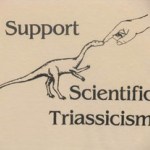conservation
I don't know about the rest of the world, but in Britain there is a very entrenched tradition of 'feeding the ducks'. People go on walks (usually at the weekend), and they take with them bagfuls of bread (sometimes even whole loaves). They then proceed to throw all the bread in the water. After a while the ducks and other birds at the pond get bored or full, and they stop eating it (see photo, taken over the weekend at Southampton Common's Cemetary Lake). Then more people come and throw in more bread. More people come, and they throw in more bread. Then more, and so on and on. On any given…
tags: Palos Verdes Blue Butterfly, Glaucopsyche lygdamus palosverdesensis, Joel Sartore, National Geographic, image of the day
Palos Verdes Blue Butterfly (Glaucopsyche lygdamus palosverdesensis)
4,300 (Estimated 300 wild and 4,000 captive).
Image: Joel Sartore/National Geographic. [larger view].
Wikipedia writes;
The Palos Verdes Blue butterfly is a small endangered butterfly native to the Palos Verdes Peninsula in southwest Los Angeles County, California. As its distribution has been proven to be limited to one single site it has one of the best claims to being the world's rarest…
tags: Dusky Seaside Sparrow, Ammodramus maritimus nigrescens, Joel Sartore, National Geographic, image of the day
The world in a jar: Is this the sort of world we wish to leave to our children?
Dusky Seaside Sparrow (Ammodramus maritimus nigrescens).
Extinct.
Image: Joel Sartore/National Geographic [larger view].
The photographer writes;
Slipping into extinction almost unnoticed, the Dusky Seaside Sparrow, Ammodramus maritimus nigrescens -- found mainly on Florida's Merritt Island -- declined from roughly 3,000 pairs to none as its salt marsh habitat was sprayed with DDT and taken over for…
Many thanks for some blog publicity go out to Karl Leif Bates, editor of Duke University's online research monthly magazine, Duke Research, and co-founder of Science Communicators of North Carolina (SCONC). Many of you who attended this past weekend's ScienceOnline'09 gathering may recognize Karl as he was in attendance.
Completely independent of any coaxing (Karl was *not* present at my free, Friday Fermentable wine tasting), my post is currently the February 2009 feature on the Duke Research section, Voices: Science in Conversation.
The backstory is that, during our December vacation, we…
Oh my god. Two years at ScienceBlogs have passed, and Tet Zoo has now been going for three years. It all started on January 21st 2006 when, for no good reason at all, I started a blog over at blogspot.com. Yes, Tet Zoo is three years old. Time to look back at the past year of operation.
For starters, should you want to know more about Tet Zoo's origin and history of operation, read Happy first birthday Tetrapod Zoology part I and part II (both at ver 1), and Happy second birthday part I and part II. Last year, I included a 'what happened in tetrapods during 2007'. I'm not going to do the…
As a species, our unflinching obsession with size is just as apparent in our dealings with other animals as it is in our personal lives. Fishermen prize the biggest catches and they're are obliged to throw the smallest specimens back in. Hunters also value the biggest kills; they provide the most food and make the flashiest trophies. This fixation isn't just a harmless one - by acting as a size-obsessed super-predator, humans are reshaping the bodies of the species we hunt, at a remarkable pace and to a dramatic degree.
Predators already put a lot of pressure on their prey to evolve new ways…
Yesterday, President George W. Bush set aside 195,000 square miles of Pacific ocean habitat under executive authority granted by the Antiquities Act. He created three new national monuments which ban seafloor mining, most commercial fishing, and limit recreational and indigenous harvest.
The new areas include the waters surrounding Howland, Baker, Jarvis and Wake islands; Rose, Palmyra and Johnston atolls; Kingman Reef; the three northernmost Mariana Islands; and the deep seafloor of the Mariana Trench.
And with a stroke of his pen, W. protected more ocean than any other political leader in…
It's not a good time for corals. Last year, a third of coral species went straight into the endangered lists after being assessed for the first time, and it looks like 2009 isn't going to bring any reprieves to the doom and gloom. In particular, a new study provides hard evidence that the mightiest of coral super-colonies - the Great Barrier Reef - is in trouble.
Like reefs across the world, the Great Barrier Reef faces many threats, including pollution, physical destruction, predatory starfish and perhaps most importantly, the many effects of climate change. Glenn De'ath and colleagues from…
tags: Ranitomeya tolimense, Golden-headed Poison Frog, amphibians, nature, image of the day
Golden-headed Poison Frog, Ranitomeya tolimense.
Image: Alonso Quevedo, Fundacion Proaves [larger view].
The South American country, Colombia, is home to more threatened amphibian species than any other country on earth. In a bid to protect some of them, such as the Golden-headed Poison Frog, Ranitomeya tolimense, conservation groups recently purchased some undisturbed forest and created the Ranita Dorada Amphibian Reserve.
Miners used to take canaries into unfamiliar shafts to act as early warning systems for the presence of poisons. Today, climate scientists have their own canaries - amphibians. Amphibians - the frogs, toads and salamanders - are particularly susceptible to environmental changes because of their fondness for water, and their porous absorbent skins. They are usually the first to feel the impact of environmental changes.
And feel it they have. They are one of the most threatened groups of animals and one in three species currently faces extinction. The beautiful golden toad (right) was one of…
The Humboldt squid is not an animal to mess with. It's two metres of bad-tempered top predator, wielding a large brain, a razor-sharp beak and ten tentacles bearing 2,000 sharp, toothed suckers. It cannibalises wounded squid, and it beats up Special Ops veterans. But over the next few years, the Humboldt faces a threat that even it may struggle against, one that threatens to deprive it of the very oxygen it needs to breathe - climate change.
The Humboldt squid (also known as the jumbo squid) lives "chronically on the edge of oxygen limitation". Through an unfortunate combination of…
Elephants always count as star attractions in any zoo or wildlife park lucky enough to have them. But while many visitors may thrill to see such majestic creatures in the flesh, some scientists have raised concerns about how well animals so sociable and intelligent would fare in even the best of zoo environments.
Now, a new study suggests that some of these concerns might be warranted. Ros Clubb from the RSPCA, together with colleagues from various universities and the Zoological Society of London, studied the health of zoo elephants with a census of mammoth proportions.
Concentrating on…
This time, it's personal.
There is no question fisheries are in serious trouble and Bush is hoping to loosen rules under the National Environmental Policy Act (NEPA) that govern the environmental review process surrounding catch limits. The proposed 11th hour changes would weaken the Magnuson-Stevens Act (a bill I was intimately involved with in 2006).
Stay vigilant folks. Oceans--not special interest groups--need protection.
I looked back at the woman next to me in disbelief; a mid-forties Greenpeace Director. It was June 2006 and we had been chatting a few minutes as the plane taxied on the runway. She began by telling me about her journey to activism. A literature major in college, she felt a longing to do more to save the environment. In the early 90's she joined Greenpeace and rose to a Director over time. Finally she asked what I did. 'I work in the Senate on ocean, energy, and environment...' That's where she cut me off.
'Our planet is a mess because of you people!'
The thing is, up until then I…
tags: Thick-billed Parrot, streaming news report, conservation, streaming video
This streaming video is a Bird News Network (BNN) video by American Bird Conservancy, and includes some amazing footage of the Thick-billed Parrot taken by Greg Homel, Natural Elements Productions. The video discusses several recent conservation successes to help boost populations of this endangered species that may one day be reintroduced back into the United States where it once lived in Arizona. [3:37].
As Charles Darwin learned several centuries ago, islands are havens for evolution. Newcomers to these isolated worlds find themselves unshackled from the predators that dogged them on the mainland. They celebrate their freedom by diversifying into a great variety of species. But predators still have ways of tracking them down, and following the footsteps of sailors is one of them. By killing adults and eating eggs, introduced predators such as rats, cats and stoats are responsible for nine in ten of the bird extinctions since 1600.
Now, conservation agencies are getting serious about…
So I've spent the past many days moving across town. Not a terribly far jump, just enough to change my zip code by one digit. The transition has caused me to sift through a seemingly endless pile of loot collected at conferences and events... many of which, bestowed unto me in the name of conservation.
I'm not just talking calenders and totes either. There have been major expenditures under the umbrella of some organization or other wooing participants with free trinkets. Posters, stuffed animals, key chains, stickers, magnets, reading lights, magazines, buttons, tshirts, beer (American…
Hawaii has seen another invasion of the dangerous box jellyfish and we've got the details at Talking Science. Most importantly, remember everything's connected: oceans, land, and atmosphere. We're a single component of the vast array of biodiversity on the planet and what alters one species impacts the rest of system.
In other words, there's a lot more to this story than a few more jellyfish...
Box jellies are unique because they can move at up to four knots through the water, whereas most other jellyfish species simply drift. Their 24 eyes (six on each side of the bell) are made up of a…
tags: endangered species, endangered birds, world map, birds
"... species such as the house sparrow, snipe, starling, lapwing and corn bunting have been listed as birds of European concern, but these species have been declining in the United Kingdom's countryside for decades." Mark Avery, 2004.
A total of 9934 bird species were assessed for threatened species status by 2004; 1213 species were at risk of global extinction. In Indonesia 121 bird species were at risk of local extinction; in Brazil, 120 species. On average, over 18 bird species were at risk of local extinction per territory. […


